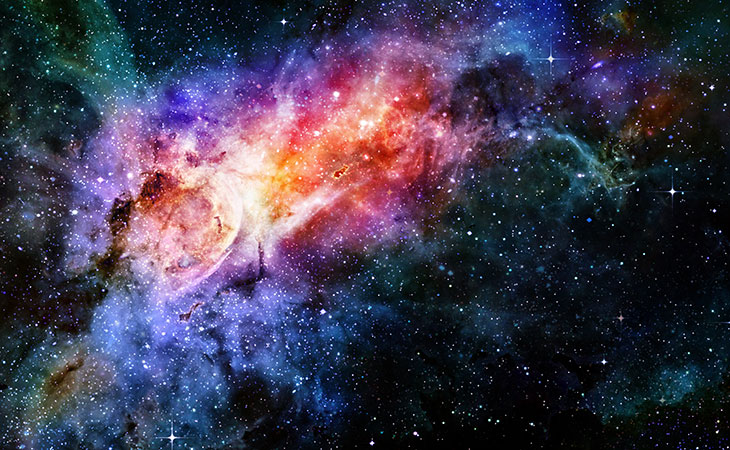Physicists Look Beyond WIMPs For Dark Matter

Stars and nebula in deep outerspace.
clearviewstock via shutterstock | http://shutr.bz/1YVU8nV
(Inside Science) -- Physicists are on the hunt for elusive dark matter, the hypothesized but as yet unidentified stuff that makes up a large majority of the matter in the universe. They had long favored "weakly interacting massive particles," known as WIMPs, as the most likely dark matter candidate, but after an exhaustive search, some scientists are moving on to more exotic particles.
Most estimates suggest that there's 5-6 times as much dark matter as there are things that we can see, such as galaxies, stars, and planets. Yet physicists know very little about what the mysterious dark matter particles actually are, as they cannot be directly observed and barely interact with normal matter.
New research leaves dwindling room for WIMPs, motivating a search for other particles that could fit the bill.
"The WIMPs are getting harsh experimental scrutiny, and may get ruled out," said Kathryn Zurek, a physicist at Lawrence Berkeley National Laboratory in California.*
Zurek and others presented ongoing work on dark matter alternatives to WIMPs in April at an American Physical Society meeting in Salt Lake City. "We should broaden the searchlight, and the natural place is to go lighter," Zurek said.
She and her colleagues are looking into less massive particles that interact more weakly with ordinary matter. These include an array of particles with exotic names like "axion," "sterile neutrino," and "Higgsino," a theoretical super-partner of the famous Higgs boson.
Axions are hypothetically abundant particles originally proposed in the 1970s to solve a problem with nuclear physics. In the presence of a powerful magnetic field, these minuscule particles, which are lighter than electrons, are predicted to turn into detectable photons. In spite of years of searching, however, they have yet to be found. But the Axion Dark Matter eXperiment, currently being upgraded, should definitely determine whether the particle exists, said Leslie Rosenberg of the University of Washington in Seattle.
Kevork Abazajian, a cosmologist at the University of California, Irvine, sees a new trend in the field over the past decade. "The new generation of early-career physicists is more open to dark matter other than WIMPs," he said.
He argued that physicists should consider sterile neutrinos, which interact even more weakly than their neutrino counterparts. As they decay, the particles—which are tinier than electrons—could produce detectable X-ray radiation such as that observed in clusters of galaxies. But scientists struggle to distinguish between X-rays that could be emitted by sterile neutrinos versus traditional astrophysical events. Research along these lines suffered a setback when Japan's powerful X-ray satellite Hitomi broke into pieces last month. But it may have accumulated limited science data before it was lost.
Two years ago, a group of astrophysicists reported an "excess" signal from NASA's Fermi Gamma-ray Space Telescope: a smooth stream of high-energy gamma rays emanating from the center of the Milky Way appeared to indicate dark matter particles annihilating each other. If so, it could be evidence for dark matter being WIMP-like particles.
But the signal could just have well have been due to more familiar astrophysical objects like rapidly spinning pulsars, which also emit gamma rays. A recently published statistical analysis in Physical Review Letters argues that the signal is more consistent with faint clustered objects like pulsars.
"It looks like this result's pretty robust. There's really a preference for hot spots due to point sources," said Tracy Slatyer, an MIT physicist and co-author of the paper. This means that the jury's still out on WIMP-like dark matter, she adds.
"We thought WIMPs could be tested, so we built these sensitive detectors, but we haven't seen anything yet. The Large Hadron Collider hasn't seen dark matter yet either," said Dan Hooper, a Fermilab astrophysicist who helped perform the original analysis of the gamma rays. "WIMPs start to look a little less good, so people these days are considering other possibilities."
As new experiments come online, the dark matter hunt continues, "In the next five to 10 years, we will narrow the range of candidates where dark matter particles can live," Zurek predicted.
*Editors' note: After publication, Kathryn Zurek contacted Inside Science to clarify that scientists can't completely rule out WIMPs as a dark matter candidate. She said WIMPs may become "highly constrained" by further research.

